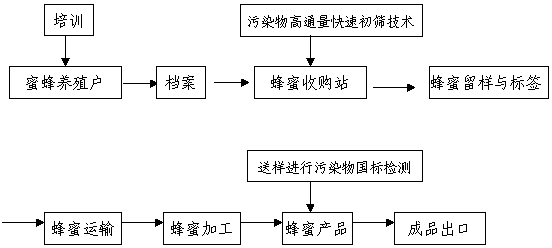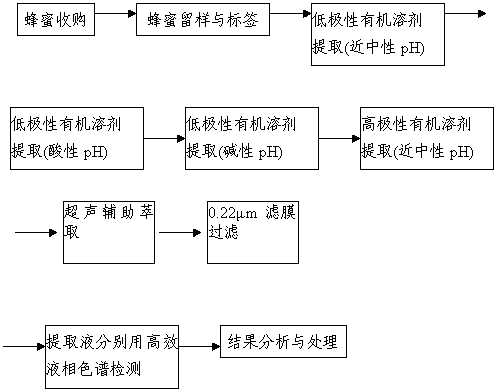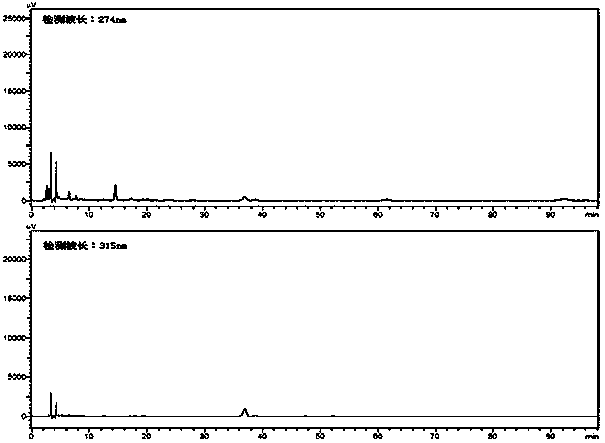Method for detecting antibiotic residue in honey based on rapid classification extraction technology
A technology of technical detection and rapid classification, applied in the direction of measuring devices, material separation, and analysis of materials, can solve problems affecting the quality of genuine honey, improve the level of pollutant detection technology and monitoring efficiency, shorten extraction time, and reduce extraction work volume effect
- Summary
- Abstract
- Description
- Claims
- Application Information
AI Technical Summary
Problems solved by technology
Method used
Image
Examples
Embodiment 1
[0035] Example 1 The standard spectrum of a certain blank honey
[0036] ①Classified extraction of antibiotic residues in honey:
[0037] Extract the blank honey sample of a certain honey with organic solvent ethyl acetate or dichloromethane under the conditions of pH7.0, pH2.5, and pH9.0 respectively, and extract most of the antibiotic residues in the blank honey sample into the solvent , to obtain a sorted extract containing antibiotic residues, which is reserved for subsequent analysis and detection;
[0038] ②Rapid primary screening of antibiotic residues:
[0039] The classified extract containing antibiotic residues obtained in step ① is detected by high performance liquid chromatography separation and detection technology, high performance liquid chromatography-mass spectrometry technology, portable gas chromatography or gas chromatography-mass spectrometry technology to obtain the honey blank The standard map of honey, such as image 3 shown.
Embodiment 2
[0040] Example 2 Standard Spectrum Library of Antibiotic Residues
[0041] According to the same classification and extraction technology as in Example 1 and the rapid detection technology of antibiotic residues, the honey sample after accurately adding a certain antibiotic in the blank honey sample of a certain honey used in Example 1 is extracted and detected for antibiotic residues, and the antibiotic residues are obtained. Standard spectral library of honey with antibiotics.
[0042] Carry out the extraction and detection of antibiotic residues to the blank honey after adding 23 kinds of antibiotics one by one, obtain the standard spectrum that contains various antibiotic residues; 23 kinds of antibiotic standard mixture residue chromatograms, such as Figure 4 shown.
[0043] The standard curve data of 23 antibiotics are shown in Table 1.
[0044] Described 23 kinds of antibiotics are: 1, metronidazole; 2, sulfadiazine; 3, sulfapyridine; 4, oxytetracycline; 5, enoxacin;...
PUM
 Login to View More
Login to View More Abstract
Description
Claims
Application Information
 Login to View More
Login to View More - R&D
- Intellectual Property
- Life Sciences
- Materials
- Tech Scout
- Unparalleled Data Quality
- Higher Quality Content
- 60% Fewer Hallucinations
Browse by: Latest US Patents, China's latest patents, Technical Efficacy Thesaurus, Application Domain, Technology Topic, Popular Technical Reports.
© 2025 PatSnap. All rights reserved.Legal|Privacy policy|Modern Slavery Act Transparency Statement|Sitemap|About US| Contact US: help@patsnap.com



